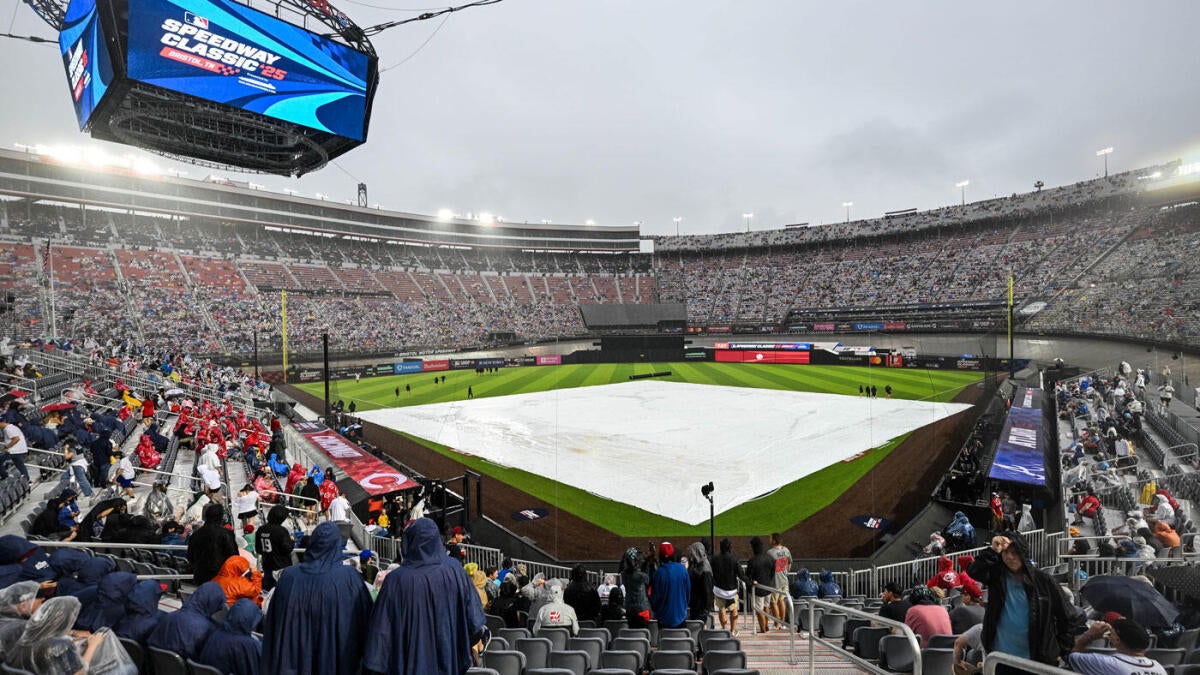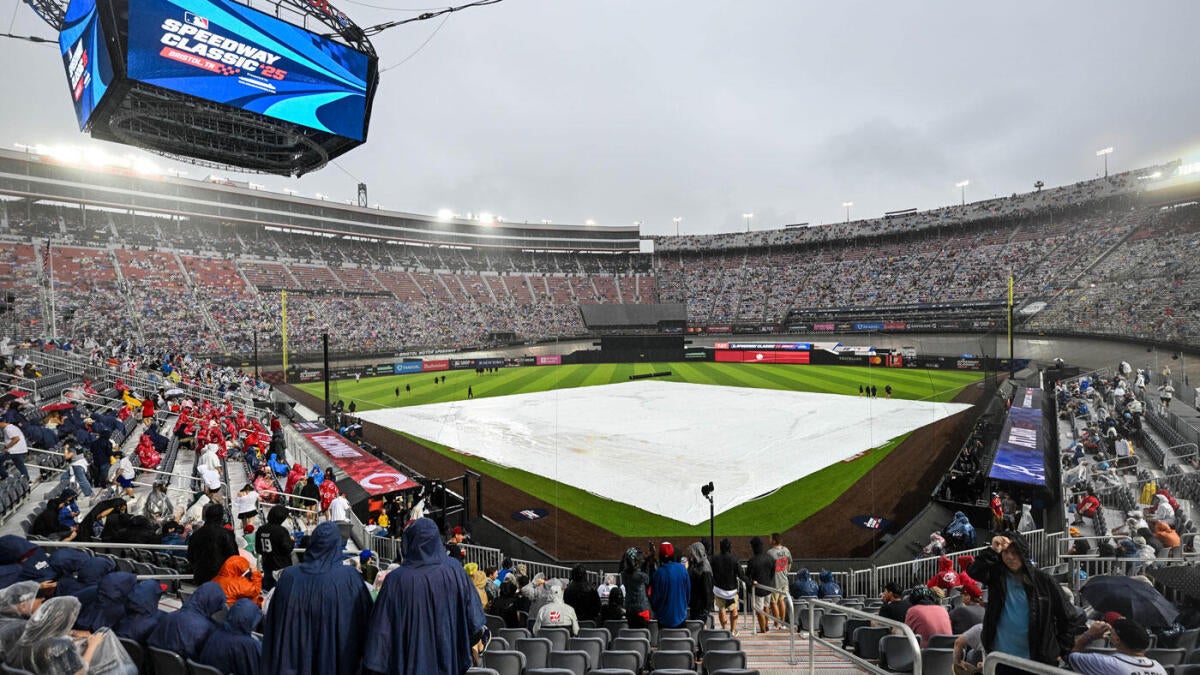The MLB Speedway Classic: A Rain-Soaked Lesson in Event Planning
A Bold Experiment Meets Nature’s Wrath
The idea of hosting a Major League Baseball game at Bristol Motor Speedway was a stroke of genius—on paper. Combining the thrill of NASCAR with the timeless appeal of baseball promised a spectacle unlike any other. The transformation of the speedway’s infield into a baseball diamond was a monumental task, requiring meticulous planning and execution. The event was billed as a historic moment, a celebration of sports and entertainment that would set new attendance records. However, the 2023 MLB Speedway Classic between the Atlanta Braves and Cincinnati Reds became a cautionary tale of what can go wrong when nature intervenes.
The Perfect Storm: Weather and Logistics Collide
From the outset, the event faced an uphill battle. The date chosen for the game was always a gamble, as late March weather in Tennessee is notoriously unpredictable. Initial forecasts hinted at the possibility of rain, but organizers pressed ahead, hoping for the best. The pre-game festivities, including musical performances and fan events, were carried out under overcast skies, with a palpable sense of anticipation mixed with anxiety.
The scheduled start time of 7:25 p.m. ET came and went as the rain intensified, leading to an initial delay of two hours and 17 minutes. Despite the setback, the atmosphere remained optimistic. Fans, many of whom had traveled long distances to attend, were determined to make the most of the experience. However, the reprieve was short-lived. After a mere one out in the bottom of the first inning, with the bases loaded and Cincinnati threatening to score, the rain returned with renewed vigor. Umpires were left with no choice but to suspend play once again.
The Decision to Suspend: A Multifaceted Analysis
The decision to suspend the game was not made lightly. Several factors played a crucial role in the decision-making process:
Field Conditions: A Slippery Slope
The transformation of a racetrack infield into a playable baseball field presented unique challenges. Drainage was a major concern, and the persistent rain quickly turned the outfield into a soggy mess. Continuing the game in such conditions would have posed a significant risk of injury to the players. The field, designed to withstand the high speeds of NASCAR vehicles, was ill-equipped to handle the prolonged rainfall that baseball requires.
Player Safety: A Non-Negotiable Priority
MLB prioritizes the safety of its players above all else. Playing on a wet and slippery field increases the likelihood of slips, falls, and other injuries. The risk was deemed too high to continue the game under those circumstances. Players, who are accustomed to playing on well-maintained baseball fields, found themselves navigating a field that was more akin to a swamp than a diamond.
Visibility: A Blurred Vision
Heavy rain can significantly reduce visibility, making it difficult for players to see the ball and react accordingly. This is especially problematic for outfielders, who need to track fly balls in the air. The rain not only made it difficult for players to see the ball but also affected their ability to communicate with each other, further complicating the situation.
Fan Experience: A Soaked and Disappointed Crowd
While many fans were willing to brave the elements, the prolonged delays and the increasingly uncomfortable conditions detracted from the overall experience. MLB officials recognized that it was not fair to subject fans to such conditions for an extended period. The record-breaking crowd that turned out for the game, even in the face of inclement weather, is a testament to the strong interest in such events. However, the disappointment was palpable as fans were left soaked and disheartened.
Lessons Learned: Planning for the Unpredictable
The suspension of the MLB Speedway Classic was a major disappointment for everyone involved. While the rain was an unavoidable factor, the incident raises questions about risk assessment and contingency planning for future outdoor events.
Weather Monitoring: A Proactive Approach
While it’s impossible to predict the weather with absolute certainty, advanced weather monitoring and forecasting can provide valuable insights into potential risks. Organizers should closely monitor weather patterns in the days and weeks leading up to the event and be prepared to adjust their plans accordingly. Utilizing real-time weather data and consulting with meteorologists can help mitigate the impact of inclement weather.
Contingency Plans: A Safety Net
Having well-defined contingency plans in place is crucial for mitigating the impact of inclement weather. This may include having an alternative date or location available, or implementing measures to improve field drainage. For future events, organizers should consider having a backup plan in place, such as a retractable roof or a temporary dome, to ensure that the game can proceed regardless of the weather.
Fan Communication: Keeping Fans Informed
Clear and timely communication with fans is essential during weather delays. Providing regular updates on the status of the game and offering alternative entertainment options can help to keep fans engaged and informed. Organizers should also consider offering refunds or credits for future games to mitigate the disappointment of fans who traveled long distances to attend the event.
Dome Considerations: A Reliable Solution
While logistically challenging and expensive, exploring the possibility of utilizing temporary or permanent dome structures for outdoor events could provide a more reliable solution for mitigating weather-related disruptions. The use of a dome would not only protect the field from rain but also provide a controlled environment for players and fans alike.
A Glimmer of Hope: The Future of Innovative Events
Despite the unfortunate circumstances, the MLB Speedway Classic was not a complete failure. The event generated significant buzz and demonstrated the potential for innovative collaborations between different sports. The record-breaking crowd that turned out for the game, even in the face of inclement weather, is a testament to the strong interest in such events.
With careful planning, improved risk management, and a bit of luck from Mother Nature, future editions of the MLB Speedway Classic could be a resounding success. The key is to learn from the mistakes of the past and adapt to the unpredictable nature of outdoor events. By implementing the lessons learned from this event, organizers can ensure that future innovative sports spectacles are not only memorable but also successful.
Weather or Not: The Enduring Appeal of Baseball
The rained-out MLB Speedway Classic serves as a reminder that even the most meticulously planned events are subject to the whims of nature. Yet, it also underscores the enduring appeal of baseball. The fans who braved the elements, the players who were eager to take the field, and the organizers who poured their hearts into the event all share a common passion for the game. That passion will undoubtedly fuel future efforts to bring baseball to new and exciting venues, regardless of the weather. The MLB Speedway Classic may have been a washout, but the spirit of innovation and the love for the game remain undeterred.












